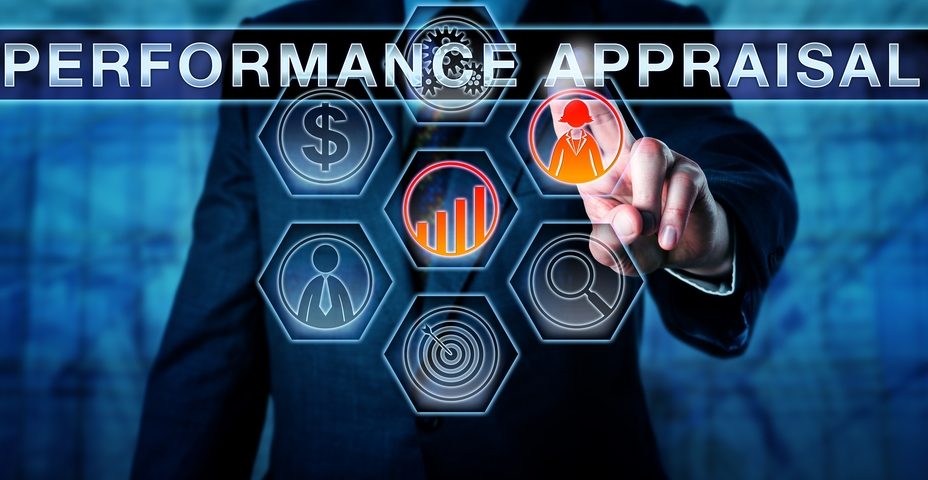Performance Management System Vs. Performance Appraisal

December 4, 2023
The most valuable asset of any successful organization is its human capital. To drive business results, it is essential to implement systems that effectively manage employee performance, align individual contributions with company goals, and promote continual growth and improvement.

Two vital tools for managing and developing human resources are performance appraisal systems and performance management systems. While both aim to enhance employee productivity, there are key differences between these approaches. Performance appraisals offer periodic evaluations within a defined structure and criteria. In contrast, performance management emphasizes ongoing alignment, feedback, and development to drive continual improvement.
Performance management system vs performance appraisal are complementary systems that can work together to optimize organizational success when applied strategically. This article will examine the distinct characteristics and objectives of each methodology.
Definitions and key characteristics of performance management system vs performance appraisal
Performance management and performance appraisals represent two systems for evaluating and developing employee performance. While related, they have distinct characteristics and aims. Before diving into what is the difference between performance management and performance appraisals, it is important to understand the core features that define each one.
Performance management
Performance management is a dynamic, continuous process for ensuring employees are meeting objectives and contributing to organizational success. It aligns individual goals with team and company goals to create synergy. Performance management is proactive, forward-looking, and holistic in nature. It aims to provide clear direction, support professional growth, and maximize productivity through ongoing collaboration and communication. Key characteristics of performance management systems include:
- Goal-oriented: Establishes clear objectives, success metrics, and aligned activities. Creates line-of-sight between employee tasks and organizational strategy
- Customized: Tailored to organizational culture and needs. Flexible to adapt to changing internal and external conditions.
- Continuous: Involves regular check-ins, feedback opportunities, and reviews throughout the year. Emphasizes ongoing dialogues rather than isolated annual reviews.
- Developmental: Identifies strengths to leverage and areas of improvement to build skills. Places high priority on growth and capability building.
Collaborative: Managers and employees partner to set expectations, solve problems, and discuss progress. Fosters trust and engagement through two-way communication.

Performance appraisal
Performance appraisals are periodic evaluations of an employee’s job performance and contributions over a defined review period, often annually. Appraisals provide structured measurement and documentation of accomplishments based on historical data. They are more reactive in nature, and conducted within a standardized framework of criteria. Typical features of performance appraisals:
- Retrospective: Assesses accomplishments, skills, and performance for a preceding period.
- Systematic: Follows consistent structure, metrics, forms, and procedures. Allows comparisons across groups.
- Formal: Documentation is maintained for performance data and future reference.
- Individual: Focuses on each employee’s competencies, achievements, behaviors, and development areas.
- Quantitative: Relies heavily on scores, ratings, and performance metrics.
While appraisals have limitations, they provide valuable formal assessments and data points that complement ongoing performance management.

Distinct differences between performance appraisal and performance management
Managing employee performance is essential for organizational success. While both play an important role, there are key differences between performance management system vs performance appraisal:
| Aspect | Performance appraisal | Performance management |
| Time orientation | Retrospective in nature: Focuses on evaluating past performance based on set criteria and goals. Generally conducted at specific intervals, often annually or semi-annually. | Future-focused: Primarily concerned with ongoing performance and future objectives. Continuous process, with regular check-ins, feedback, and adjustments as needed throughout the year. |
| Nature and approach | Reactive: It’s a response to past performance, where strengths and weaknesses are identified. Individual-focused: Targets individual accomplishments, competencies, and gaps. | Proactive: Anticipates challenges and addresses them in real-time, facilitating growth and improvement. Holistic: Considers collective performance and how individual contributions align with team and organizational goals. |
| Frequency and engagement | Infrequent: Conducted periodically, often once or twice a year. More formal in nature, involving structured reviews and feedback sessions. | Ongoing: A continuous loop of setting expectations, monitoring, feedback, and adjustments. Involves regular dialogues, fostering a stronger manager-employee relationship. |
| Metrics and evaluation | Quantitative: Heavily reliant on numerical scores, ratings, and rankings. Outcome-based: Focuses on whether targets were met, often lacking context or broader perspective. | Qualitative: While it can involve quantitative metrics, it also emphasizes feedback, discussions, and developmental plans. Process-oriented: Concerned with the ‘how’ – the methods, behaviors, and strategies employed by individuals to achieve results. |
| Flexibility and adaptability | Rigid: Operates within a fixed framework with predefined criteria and limited scope for adjustments. Typically focuses on job descriptions, set objectives, and benchmark comparisons. | Dynamic: Allows for adjustments in goals and strategies in response to changing business needs or external factors. Emphasizes role clarity, evolving expectations |
In today’s dynamic business landscape, agility and alignment are key. The comparison of performance management system vs performance appraisal illuminates the significance of an integrated approach. Talentnet’s performance management system service empowers organizations to optimize human capital, the most valuable asset driving sustainable growth. There are exciting innovations in performance metrics, key performance indicators, and best practices for building a high-performance culture.




